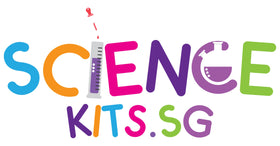
Science Kits for Special Needs: Adapting Learning Tools for All Children
The Importance of Inclusive Science Education
Inclusive science education ensures that children with varying abilities can explore, experiment, and discover the wonders of science. Engaging all children in science:
1. Promotes Equity: Every child deserves access to quality education. Inclusive science kits ensure that children with disabilities are not left behind.
2. Enhances Learning: Children learn better when they are actively engaged. Hands-on science activities can be particularly beneficial for children with special needs, offering multisensory experiences that enhance understanding.
3. Fosters Independence and Confidence: Successfully completing science experiments can boost a child’s confidence and encourage a sense of independence.
4. Encourages STEM Interest: Early exposure to science can inspire a lifelong interest in STEM (Science, Technology, Engineering, Mathematics) fields.
How Science Kits Are Adapted for Special Needs
To cater to the diverse needs of children, science kits can be adapted in several ways:
- Simplified Instructions: Clear, simple language and visual aids make instructions easy to follow. This might include step-by-step pictograms or video tutorials.
- Sensory-Friendly Materials: Materials are chosen for their safety and comfort. Items with strong odors, sharp edges, or overwhelming textures are avoided.
- Adapted Tools: Tools are designed for ease of use. This can include large tweezers, adapted scissors, or battery-powered magnifiers to assist with fine motor challenges.
- Multisensory Approaches: Experiments incorporate various sensory elements, such as tactile, visual, and auditory components, to cater to different learning styles.
- Safety: All materials are non-toxic and safe, with necessary protective gear and safety instructions included.
Examples of Adapted Science Kits
Here are some examples of how common science experiments can be adapted to be more accessible:
-
Volcano Eruption:
- Materials: Plastic volcano, baking soda, vinegar, food coloring.
- Adaptations: Use a pre-made plastic volcano to avoid complex construction. Provide a large dropper or squeeze bottle for easier handling of liquids. Include clear visual instructions.
-
Plant Growth Observation:
- Materials: Seeds, soil, pots, watering can, magnifying glass.
- Adaptations: Use larger seeds that are easier to handle. Include a magnifying glass with an easy grip. Provide a simplified growth chart with images.
-
Simple Circuits:
- Materials: Battery, wires, bulb, switch.
- Adaptations: Use snap circuits that easily connect without the need for twisting wires. Provide a clear, step-by-step visual guide.
Success Stories and Testimonials
Parents and educators who have used adapted science kits often share positive feedback. Children who previously struggled with traditional science activities have found joy and success with these inclusive tools. Testimonials highlight improvements in engagement, understanding, and confidence among children with special needs.
How to Get Started
- Research and Choose the Right Kit: Look for science kits specifically designed or adaptable for special needs. Consider your child’s specific challenges and interests.
- Involve Your Child: Let your child help choose the experiments that interest them. This can increase their excitement and engagement.
- Collaborate with Educators: Work with your child’s teachers to integrate science kits into their learning plan. Teachers can provide additional support and guidance.
- Observe and Adjust: Pay attention to what works best for your child and be ready to make adjustments. Seek feedback from your child and adapt the activities as needed.
Conclusion
Science kits adapted for special needs children are not just suitable; they are incredibly beneficial. They provide an equitable, engaging, and educational experience that can inspire a love for science in every child. By choosing the right tools and making thoughtful adaptations, parents can ensure their children have the opportunity to explore, discover, and achieve in the world of science. Embrace the possibilities and watch your child’s confidence and curiosity grow.
